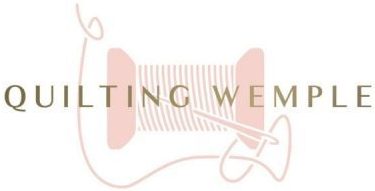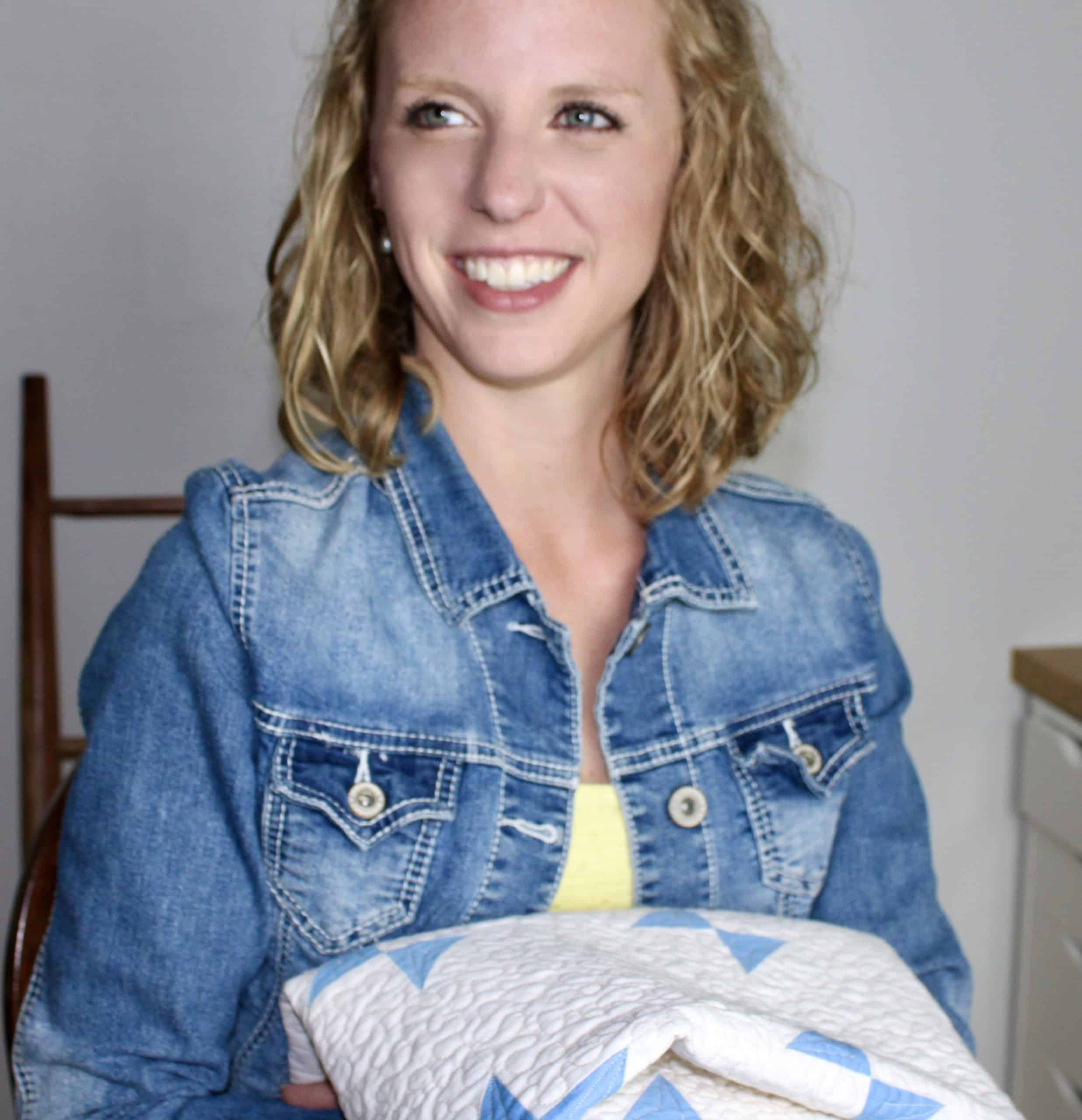You’ve officially finished a quilt top, it might have taken you days, weeks, or even months!
Regardless. It’s. Done.
Now that you’ve finished it you are realizing that there is more words and instructions left on this quilt pattern.
Wait.
You aren’t quite there yet.

There’s a few steps left to finish a quilt up, and while there’s always a hard way to do these steps, there’s plenty of easy ways too.
It just all depends on how ambitious you are.
So let’s get it going and finish a quilt so we can move on to the next one!
Basting

Once you finish a quilt top its time to make whats called a “Quilt Sandwich”.
Quilt tops are nothing more that weird sheet when you finish them, so we need to add some batting and a back to it to make it warm and cuddly.
The three layers will be “sandwiched” together and secured in place temporarily before moving on to the next step.
So we have a few things to chat about first.
Let’s talk about the details of batting and the details of backing fabric.
Batting

There are a variety of different batting options out there, but here’s a quick list of the most popular ones:
- Polyblend
- Cotton
- Wool
- Bamboo
Each one has different aspects that make it more or less desirable for each quilting project, but for the most part these are the things you’ll be debating over:
Is it for a baby or child and likely to need to be washed often? Are you looking for the cheapest option to Get ‘Er Done?
Go with a Poly Blend.
Don’t mind paying a little extra for a noticeable difference in warmth?
Go with Wool.
Like a worn crinkly effect to your quilts?
Cotton shrinks slightly when washed and makes that comfy crinkly feel.
Are you aiming for this quilt to be handed down generations and are willing to invest in the highest end softest option?
Bamboo is for you.
Once you decide on the perfect batting for your project its time to think about the backing fabric.
Backing

Your quilt already has the front side, now it needs a back side.
Backings can come in all sorts of different forms and materials but here’s a few to get you going:
- Regular cotton fabric that coordinates or matches the fabric you used on the quilt top
- Fuzzy minky fabric that is just oh so soft
- Fleece or flannel
- A bed sheet repurposed into a quilt back to keep costs down
- A second quilt top to make a double sided quilt
The options are limitless.
There are fabric options out there that are extra wide with the intention of being used for a quilt backing, however its perfectly fine to have to piece together multiple large runs of fabric to make a larger piece that will cover the whole back.
Regardless of what you use, you just need a piece of quality fabric large enough to cover the full dimensions of the quilt top.
Once you have your quilt top, batting, and backing ready to go its time to baste it to temporarily secure it all together so you can quilt it.
When you’re ready be sure to check out my go to basting method here that especially fool proof for beginners.
Quilt It Up
Once you are basted it’s time to decide on a quilting design that will permanently secure all of the layers together.
No matter which type of batting you use, if it isn’t secured, it will basically rip apart and clump up inside your quilt over time and washes if it isn’t quilted.

So before quilting, be sure to check the packaging on the batting to figure out the minimum density of quilting it needs to be secure.
You can always quilt more densely, but you want to avoid quilting too sparingly.
Professional Quilting
Professional quilters have fancy long arm quilting machines that are designed for consistent and perfect quilting.
While the results are undeniably beautiful, it certainly comes at a cost.
If you have some extra cash hanging around and don’t want to quilt it yourself, this is a great option for beautiful results.
Quilting Your Own Quilt

Related:
Chevron Baby Quilt – Free Baby Quilt Pattern
While long arm machines are made special for the quilting step of the quilt making process, a quilt can certainly be quilted on a normal home machine.
Until I win the lottery and can afford my own long arm, quilting on my domestic machine is my go to.
As long as you aren’t trying to make king size quilts, using your domestic machine is perfectly doable.
And the more you practice on your home machine, the better you will get.
Its a lot like drawing, when you start off sketching, you don’t really know what you are doing.
But the more you do it, the more you develop your own style and start developing great ideas for your next project.
Quilting is the same.
You are essentially drawing on the quilt to secure the layers together, but that stitching is another degree of design to your quilt.
There’s no right or wrong way to quilt your quilt, so get creative with it.
And if you need some ideas of where to start, check out a few of my machine quilting tips and tricks below.
Related:
10 Easy Quilting Ideas for Beginners
How to Stitch in the Ditch
Squaring the Quilt

Related:
A Modern Take on the Cathedral Window Quilt
Once you are done with all of your quilting, you’ll have excess batting around the outside of your quilt.
And you might even notice that your quilt kind of looks a bit wonky now too.
What gives?
When you quilt a quilt, the sewing machine naturally will push and pull the layers a little bit as it works.
This will force some edges further out than others and some corners to not be square any more from stretching.
So the next step to finish a quilt is trimming away all of the excess batting that we don’t need around the edges.
And we’ll want to get the quilt back in shape while we are at it too.
Check out my full in-depth tutorial on the quilt squaring process here.
Binding It for a Polished Finish

Last Step!
Once we have the quilt squared up, the edges are still raw and fraying.
And let’s be honest, no one wants to actually see the edge of the batting.
Adding a binding will put a nice finished edge around the outside of the quilt
Not to mention lock in all of the stitching might have been sliced through when you squared the quilt.
Make the Binding

Once you’ve done this once or twice it becomes super easy.
You’ll need to calculate how much linear footage of binding you’ll need all around the quilt to make sure you don’t run out.
Once you figure that out, you’ll cut strips of your binding fabric at 2.5” wide and join the strips together with a diagonal seam.
And when all of the strips are joined together, for added strength, iron the entire thing in half the long way.
Only a few steps and you have yourself a binding thats ready to go!
If you want a more in-depth tutorial on this process be sure to check it out here!
Attaching the Binding

To attach the binding there are really two methods to choose from.
Machine binding and hand binding.
I personally lean more towards hand binding instead of machine binding, but both options look beautiful regardless.
While attaching the binding is basically the same regardless of which method you choose, there is only one slight difference.
In machine binding, the binding is initially attached to the BACK first and wrapped forward.
With hand binding, you attach the binding to the FRONT first and wrap it back.
There’s a few tips and tricks to keep in mind when you are attaching the binding, so be sure to double check my tutorial for the details on the process.
You can find my tutorial on binding a quilt here!
It’s Official, You Have Finished A Quilt

Binding is the last step in the process and is so satisfying to finish!
And the best part is that once you finish a quilt, you can start planning out the next one!
If you found this guide helpful in your quilting adventures, be sure to follow me on Pinterest below!
You’ll get all of my latest and greatest quilting hacks, tips, and tutorials straight to your home feed when they get released each week.










0 Comments